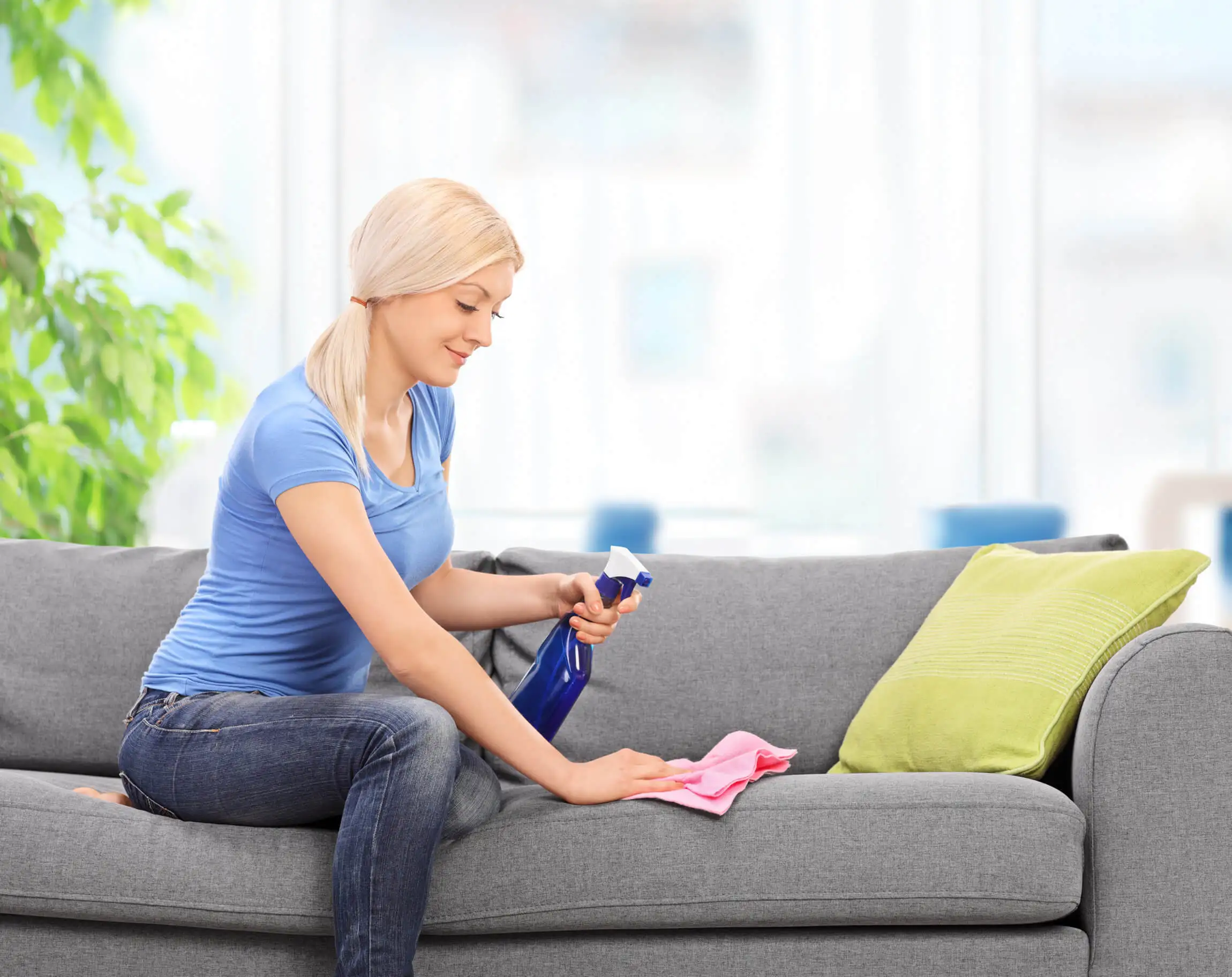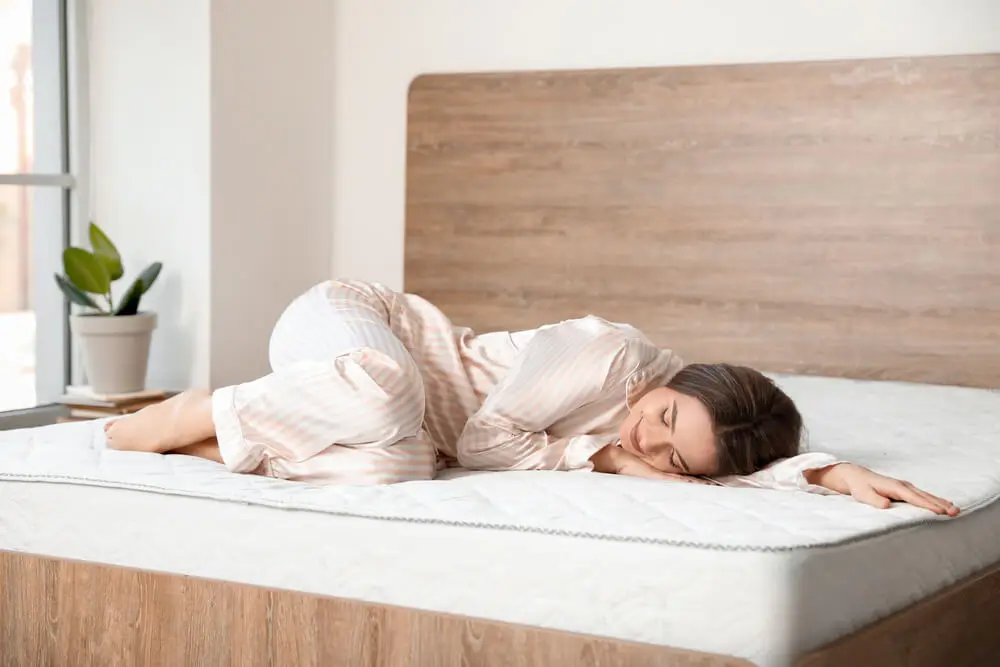31 Recommendations to Prevent Allergies in Your Home


Reviewed and approved by the nurse Leidy Mora Molina
Fighting allergies at home doesn’t just mean taking medication when you start experiencing symptoms. On the contrary, as in so many other situations in life, prevention is key. Read on and discover our recommendations to prevent allergies in your home.
To begin with, it’s crucial to identify and control the factors that may be linked to an allergen anywhere in your home, whether it be curtains, bedsheets, furniture, the kitchen, the bathroom, the bedroom, plants, pets, etc. The fight then begins with a thorough cleaning, which is perhaps the most important preventative measure. However, it doesn’t stop there. In this article, we’ll provide you with a series of simple but powerful recommendations that you can take into account to prevent allergies at home.
Allergies and allergens
To prevent uncomfortable symptoms like a runny nose and even more dangerous situations (anaphylaxis and anaphylactic shock), you need to stay away from the agent that produces the allergic reaction.
This factor, called an allergen, may be present in various forms in your home, such as mold, dust, dust mites, and pollen. Allergens can also lurk in damp walls, carpets, and plants, in pet hair and dander, in bedding, and even in your food. Some people suffer from seasonal allergies, which get worse during certain times of the year. However, many people live with the symptoms throughout the year, as they have the allergens at home.
Although in some cases it’s necessary to take antihistamines to reduce the symptoms, the best thing to do is to identify the triggering factors of your allergies and reduce your contact with them. Therefore, the first thing to do is to visit an allergist.
This will clearly help you focus on what to do and where you need to direct your preventive measures to prevent allergies at home.
31 recommendations to prevent allergies at home
For those who live in places with a high rate of allergens, the task in hand may seem complex. However, know that it’s possible to combat the factors that trigger allergies at home. Here are some recommendations.
1. Close the door to allergens

Pollen particles or other allergens can adhere to shoes or clothing. It’s a good idea to place a carpet or doormat to clean the soles when entering or before entering. Another option is to have an area to remove footwear and your outerwear such as jackets, hats, overcoats, and scarves. For dirty garments, you can leave them in a basket until it’s time to wash them.
2. Prevent allergens from entering through the windows
During high-pollen seasons, make sure to keep your windows closed as much as possible, especially during the hours when there’s more pollen or more wind.
3. Keep humidity at bay
Mold and certain mites thrive in humid environments. Excess water vapor must be eliminated by keeping the relative humidity of your home below 50%. An exhaust fan, other ventilation systems, or a dehumidifier can be used for this purpose.
4. Control the temperature of your home
Another factor contributing to dust mites and mold is heat, which in turn raises humidity. Ideally, the temperature should be kept under control, between 70-75° (21-24°C).
5. Change your air filters
HEPA (high-efficiency particle arresting) filters are recommended for heating or cooling systems. However, they should be changed regularly, according to manufacturers’ specifications.
This, on the one hand, allows the equipment to continue to maintain its effectiveness in removing allergens from the air. On the other hand, studies have found that, if not changed frequently, your filter can become a home for microbes, which can even be incorporated back into the filtered air.
6. Ventilate your home regularly
If the weather permits it and the pollen count isn’t too high, your windows should be opened for a few minutes each day (5 to 15 minutes) to reduce the concentration of allergens in the air in your home. The recommendation is that the open windows or doors are on different or opposite sides so that the air circulates.
7. Clean your home regularly

Cleaning is your main ally to fight dust, mold, and mites. For your cleaning to be as effective as possible to help reduce allergies at home, you should take into account the following recommendations:
- Some spaces require more frequent cleaning, such as the living room, and any rooms that have doors or windows facing the street or a lot of traffic.
- Don’t shake out items like carpets, because you may ingest the dust, which will only do more damage.
- If you’re going to dust, you should wear a mask or chinstrap to keep from exposing yourself to allergens.
- In addition, make sure to wear gloves if you suffer from skin allergies.
- Use a microfiber cleaning cloth, which absorbs dust better.
- Move the furniture close to the wall to clean all the corners.
You may also be interested in: Allergy to Pollen? Try These Hypoallergenic Flowers
8. Avoid using rugs or carpets if you have indoor allergies
However showy and decorative they may seem, avoid using rugs and carpets. To reduce the chances of allergies at home, it’s preferable to have wood, tile, or granite floors. If this isn’t an option, use a short pile carpet or washable materials. If you do have rugs or carpets, make sure to vacuum frequently.
9. Clean your windows
Windows should be cleaned not only to avoid dust accumulation, but also mold from condensation, both in the case of damp and cold places.
10. Opt for blinds
Preferably, curtains shouldn’t be used, as they accumulate dust more easily. They can be replaced by washable blinds. If it isn’t possible to remove the curtains, plain cotton or synthetic fabrics are preferable to thick fabrics. Make sure to wash them often – at least once a week.
11. Cut down on objects that collect dust
Pictures, vases, picture frames, and many other things give your decoration a touch, but they are also dust collectors. It’s best not to collect so many objects to help prevent allergies at home. If you don’t want to get rid of all these items, you can store them in a closet or in plastic containers.
12. Clean toys and stuffed animals
Toys – and especially stuffed animals – are items that accumulate dust, mold, and pet hair. Wash or clean them frequently and, when your children aren’t using them, place them in containers, as well.
13. Be careful with your books
Books are great allies when it comes to learning and leisure. However, mites think so, too. Don’t sleep with books in your room and make sure you read in a well-ventilated area.
14. Make your bedroom an allergy-free environment
We often spend more time in the bedroom than in other parts of the house. That’s why it’s important to make it an allergen-free environment. Start by replacing curtains, removing carpets, and cleaning frequently. In addition, products with powerful odors should be avoided, as these can also cause allergies.
On the other hand, make sure to open and air out your closets, take out all clothes, and wash them, even if you haven’t worn them. Clothes stored for a long time tend to develop mold and dust.
15. Get an air purifier for your room
Consider purchasing a room filter or air purifier. This is a good option for capturing dust particles and other airborne allergens. However, it can do nothing once the particles have settled on surfaces.
16. Get the right bedding

It’s best to opt for organic, non-synthetic fabrics, both in pillowcases and sheets and comforters. Don’t purchase feather pillows or wool blankets. Nowadays, bed linen is available that’s anti-mite, anti-bacterial, and anti-fungal. There are also protective mattresses and protective mattress covers.
17. Washing your bed linen regularly
Wash your bed linen frequently, including pillowcases and blankets. Use hot water. Dry it in the sun, when possible. Also, remove protective covers and shake out your mattress and pillows.
18. Get the right furniture
For the bedroom and the whole house in general, it’s best to avoid fabric upholstery. Instead, opt for chairs, tables, and other furniture with materials that are easy to clean, such as wood, metal, or plastic.
19. Be careful with your house plants
There are so many positive things about plants and so many benefits of having plants in the house. But if you’re allergic, it’s not good for them to be indoors. Find them a new home or move them to your garden or deck.
20. Keep furry pets and other animals out of your bedroom
There’s nothing like a pet to brighten up your life. However, the hairs of dogs, cats, and other animals aren’t such good friends for allergy sufferers. The same goes for bird feathers.
You don’t have to make drastic decisions, such as finding them a new home, but you do have to keep them out of the bedroom and keep them groomed. Use a pet brush to help remove excess hair.
21. Use a stove hood to get smoke, moisture, and odors out of your kitchen
One thing that helps to keep allergens from spreading around the house is the use of a stove hood. Not only does it prevent smoke and odors from spreading when you cook, but it also reduces moisture.
22. Dry everything well after washing dishes
When you wash dishes, the moisture level increases. Sometimes we splash around, leaving wet dishes behind. This is an ideal environment for dust mites and mold. That’s why it’s crucial to dry everything very well, including surfaces and drawers, and, once finished, clean the sink and even the faucets.
Keep reading: Dust Mites? Kill Them Safely and Naturally
23. Keep your kitchen clean
Kitchen cleaning requires special attention. That’s why you should take into account the following recommendations:
- Don’t leave food leftovers anywhere.
- Clean your refrigerator regularly.
- Throw away food that has been refrigerated for a long time.
- Store uncooked food in airtight containers.
24. Take out the trash
Take out the garbage daily. Don’t let it accumulate. Not only will you eliminate bad odors, but you’ll also avoid attracting mice, cockroaches, flies, and other vermin.
25. Keep your bathroom as dry as possible
If there’s a damp place par excellence in the house, it’s the bathroom. It’s crucial to prevent mold and mildew at all costs. To do so, take into account these suggestions:
- In addition to the doors, open the windows in the bathroom (if it has any), in order to air it out after showing or bathing.
- Install an extractor fan, which will help with both humidity and bad odors.
- If there’s no outlet to the outside, consider using a dehumidifier.
- Avoid using bath mats and curtains.
- Don’t use wallpaper on the walls.
- Paint your bathroom with mildew-resistant enamel or use tiles.
- Don’t leave wet towels or wet clothes in the bathroom.
26. Regularly clean your bathrooms

Clean the tiles, toilet, sink, shower area, and faucet parts of your bathroom thoroughly and regularly. Use a product that contains bleach or a similar ingredient. Dry everything well and keep it aired out after cleaning.
27. Fix all leaks
You must be very attentive to leaks. Check the pipes and walls near your bathroom and kitchen. Also, look at the roof and ceilings to make sure there are no leaks or seepage from the upper floors.
If you see any, get them fixed. Also, check in corners and stairwells, behind furniture and shelves. You should do all you can to remove any moisture buildup so that mold and mildew don’t proliferate in your home.
28. Avoid fireplaces and wood-burning stoves
It’s best to avoid fireplaces and wood-burning stoves. And if you don’t have a very open space, don’t grill near your house, as smoke and other fumes can enter and make respiratory allergies worse.
29. Your home should be a non-smoking area
Declare your home a non-smoking area. Don’t allow cigarettes inside. Remember that secondhand smoke doesn’t only expose secondhand smokers to allergies, but also to more serious respiratory illnesses, according to experts.
30. Keep an eye out for food allergies
Allergies in the home can be triggered not only by dust or dust mites, but also by what we eat. Remember to check food labels to prevent reactions in people with intolerance to substances such as lactose or gluten.
Also, if anyone in your home has any of these conditions, be careful with utensils and containers to reduce the risk of food cross-contamination.
31. Prevent insect stings and bites
As some people may experience reactions to bee stings or other insect bites, special precautions should be taken in times when they proliferate. Preferably, you should place mosquito netting on windows, apply repellents to your skin when outside, and avoid using strong fragrances.
Always be prepared in case your allergies act up
Even despite all the precautions we can take, it’s still possible to come into contact with an allergen from time to time, thus triggering an outbreak or reaction.
Therefore, it’s advisable to be prepared to face allergies if necessary. In this sense, it’s always good to have medication on hand to reduce the symptoms, such as:
- Antihistamines: loratadine, cetirizine, or similar, as recommended by an allergist.
- Nasal decongestants: cromoglycate or inhaled corticosteroid sprays; however, the latter should be handled with care, because of their side effects.
Finally, for people with a propensity to suffer severe allergic reactions (anaphylaxis), epinephrine or adrenaline auto-injectors should be on hand.
All cited sources were thoroughly reviewed by our team to ensure their quality, reliability, currency, and validity. The bibliography of this article was considered reliable and of academic or scientific accuracy.
- Álvarez M, García I, Castro R, Ronquillo M. Rinitis alérgica y rinosinusitis: Una revisión necesaria. Rev Cubana Med Gen Integr [Internet]. 2004 ; 20(1). URL disponible en: http://scielo.sld.cu/scielo.php?script=sci_arttext&pid=S0864-21252004000100007&lng=es.
- García-Bravo B, Conde-Salazar L, la Cuadra J, et al. Estudio epidemiológico de la dermatitis alérgica de contacto en España. Actas Dermo-Sifiliográficas. 2004; 95(1): 14-24.
- Magaña M, Vargas M, Escalon J, et al. Anafilaxia y choque anafiláctico. Revista Alergia de México. 2007; 54 (2): 34-40.
- Rojas G, López P, Orozco M, et al. Tabaquismo y desarrollo de alergia durante la infancia. Mecanismos fisiopatológicos. Alerg Asma Inmunol Pediatr. 2001; 10(2): 43-52.
- Salo P, Arbes S, Crockett P, et al. Exposure to multiple indoor allergens in US homes and its relationship to asthma. J Allergy Clin Immunol. 2008; 121(3): 678-684.
- Terán L, Haselbarth-López M, Quiroz-García D. Alergia, pólenes y medio ambiente. Gac Med Mex. 2009; 145(3): 215-222.
- Bustamante, R., (2021). Anafilaxia y shock anafiláctico. revistachilenadeanestesia.cl. Disponible en: https://www.capacitacionesonline.com/blog/wp-content/uploads/2021/02/Anafilaxia-y-shock-anafilactico-Rev-Chil-Anest-2021.pdf
- Chuaybamroong, P., Et al. (2010). Eficacia del filtro HEPA fotocatalítico en la eliminación de microorganismos. INDOOR AIR. DOI: 10.1111/j.1600-0668.2010.00651.x
- Montes, A., Perez, M., Gestal, J. J., (2004). Impacto del tabaquismo sobre la mortalidad en España. Disponible en: https://www.researchgate.net/publication/28302344_Impacto_del_tabaquismo_sobre_la_mortalidad_en_Espana#page=84
- Cristóbal, E., (2010). Seguridad de los corticoides inhalados en la EPOC. Archivos de Bronconeumología. Disponible en: https://www.sciencedirect.com/science/article/abs/pii/S0300289610700302
This text is provided for informational purposes only and does not replace consultation with a professional. If in doubt, consult your specialist.








